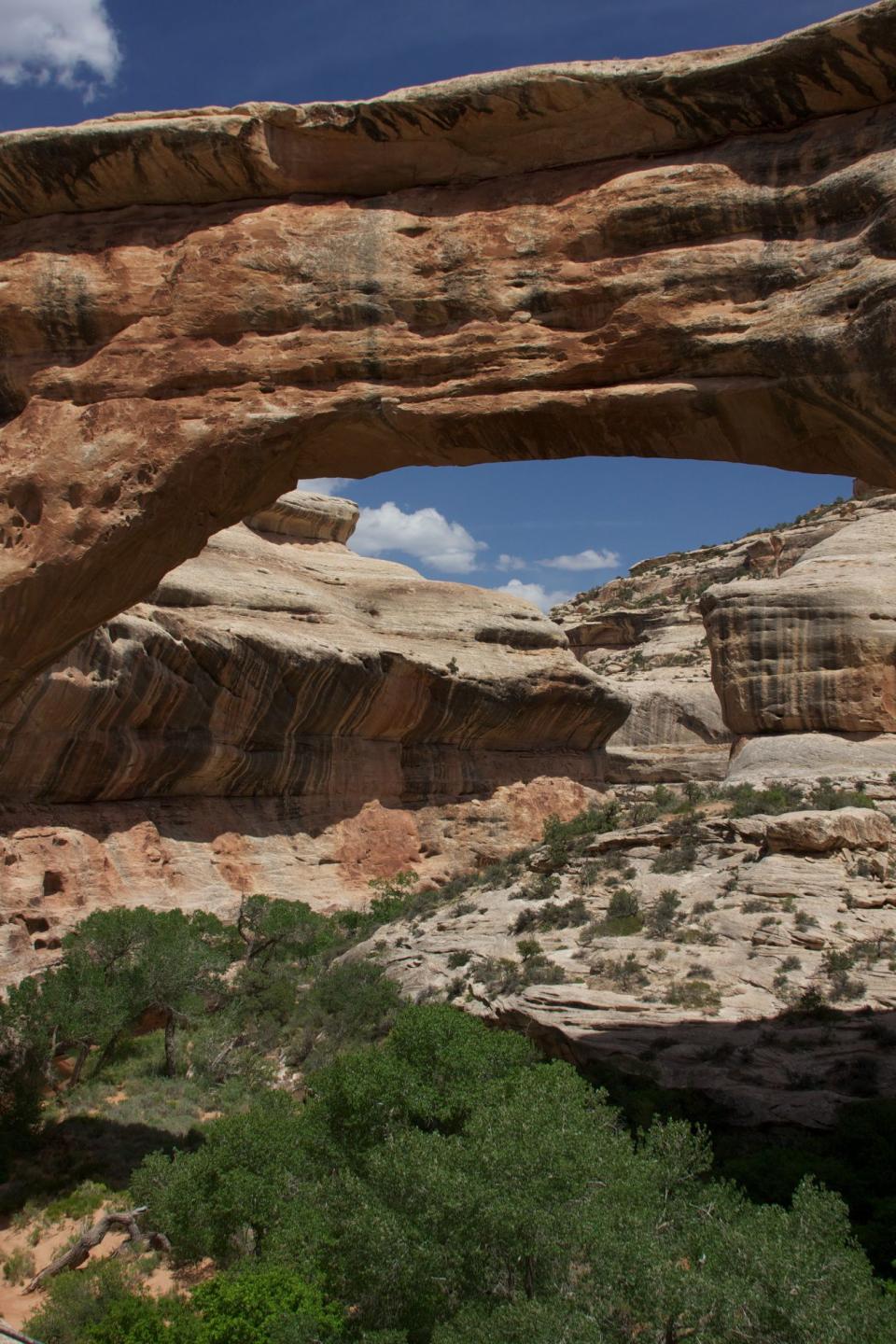Here’s a list of all 8 national monuments in Utah

Tuesday marks the 90th anniversary of the Cedar Breaks National Monument in Brian Head, Utah.
“Happy 90th Birthday Cedar Breaks National Monument!” the Cedar Breaks National Park Service wrote on its Facebook page. “Cedar Breaks was named a national monument on August 22, 1933 by President Franklin D. Roosevelt.
This separated the area from the surrounding Dixie National Forest, which is governed by the Forest Service. Thank you to all who visit the monument and your support of public lands!”
What’s the difference between a national park and a national monument?
What determines whether a landmark or area of land gets designated as a national park or as a national monument? According to the National Park Service, it comes down to amount of land and allotted funding.
A “national park contains a variety of resources and encompasses large land or water areas to help provide adequate protection of the resources.”
“A national monument is intended to preserve at least one nationally significant resource. It is usually smaller than a national park and lacks its diversity of attractions.”
Here is a list of all eight national monuments established in Utah.

1. Bears Ears National Monument
Location: San Juan County, Utah.
Former President Barack Obama established the region of Bears Ears as a national monument on Dec. 28, 2016.
Preserving the area was an effort “to protect the the ancestral homeland of Tribal Nations that all refer to the area by the same name — Hoon’Naqvut (Hopi), Shash Jaa’ (Navajo), Kwiyagatu Nukavachi (Ute), and Ansh An Lashokdiwe (Zuni): Bears Ears,” per a White House statement.
The land designated as a monument has been a source of contention between the Democratic and Republican parties since its designation, and the amount designated as federal land is still being debated.
The monument is Utah’s most recently designated national monument and “is named for a couple of buttes that rise attentively from the horizon,” UT.com reported.
Related

2. Cedar Breaks National Monument
Location: Iron County, Utah.
Former President Franklin D. Roosevelt designated the region as a national monument on Aug. 22, 1933.
The orange hues and deep canyons in Cedar Breaks National Monument make it a memorable natural sight to see. Located just outside of Cedar City, not too far from the I-15 freeway, it’s a less crowded and more accessible stop for visitors hoping to see the spectacular Utah rocks.
“Most people outside of kind of this corner of the state don’t know much about Cedar Breaks,” Gov. Spencer Cox said, per Cedar City News. “This is an opportunity to come and see things that are absolutely spectacular, less crowded, easy access, and, into a couple of years, we’re gonna have this incredible visitor center to welcome people.”

3. Dinosaur National Monument
Location: Uintah County.
Former President Woodrow Wilson designated the area as a national monument on Oct. 4, 1915.
After multiple dinosaur fossil discoveries by paleontologist Earl Douglass and connections to the Smithsonian helped preserve the 85,000 hectares that make up the monument, per Earth Magazine.
The monument in Uintah County is home to “some of the best-preserved skeletons ever found,” according to Utah.com. Children and adults have the opportunity to learn more and explore an area that has a high concentration of dinosaur fossils.

4. Grand Staircase-Escalante National Monument
Location: Kane County, Utah and Garfield County, Utah.
President Clinton designated the 1.7 million acres of federal land in Southern Utah as a national monument on Sept. 18, 1996.
Forbes named the monument as the best of all of America’s national monuments.
“The Escalante Grand Staircase region is still a hidden gem,” says Linz DeSeno, director of operations at the Yonder Escalante glamping resort on the edge of the monument told Forbes. “We don’t nearly have the tourism numbers as national parks see. There is no waiting in traffic or lines getting into the monument or making reservations for hikes. You truly feel the remoteness here in all the best ways.”

5. Hovenweep National Monument
Location: San Juan County, Utah.
Former President Warren G. Harding designated the region as a national monument on Mar. 2, 1923.
Ancestral Puebloans settled in the area now monument in San Juan County, likely passing through as long ago as 10,000 years ago, according to Utah.com. Visitors to the area can admire structures built between A.D. 1200 and 1300, per National Park Service.

6. Natural Bridges National Monument
Location: San Juan County, Utah.
Former President Theodore Roosevelt designated the area as a national monument in 1904 and became the first established National Park Service area in Utah.
The natural bridges are “among the longest natural bridges in the world,” and it “is a massive hole punched through a gooseneck ini Armstrong Canyon,” per Utah.com. Visitors can admire the spectacular wonder along the nine-mile Bridge View Drive loop.

7. Rainbow Bridge National Monument
Location: San Juan County, Utah.
Former President William Howard Taft designated the region as a national monument on May 30, 1910.
Rainbow Bridge is regarded as “the world’s highest natural bridge, its span is reported to be 234 feet,” Yahoo News reported. When establishing the monument, Taft admired the “extraordinary natural bridge, having an arch which is in form and appearance much like a rainbow, and which is of great scientific interest as an example of eccentric stream erosion,” per the National Park Service.

8. Timpanogos Cave National Monument
Location: Utah County, Utah.
Former President Warren G. Harding established Timpanogos Cave as a national monument on Oct. 14, 1922.
To get to the cave, visitors have to take a steep, winding 1.5 mile hike. It is paved, but very steep. The park mission is to “preserve the outstanding cave formations, geological processes, and historical values of the Timpanogos Cave System and associated features for the recreational and educational enjoyment, scientific value, and inspiration of this and future generations,” per the National Park Service
Related
Large national monuments are a ‘direct violation of the Antiquities Act,’ Gov. Cox says
Federal judge tosses Utah’s lawsuit over Bears Ears, Grand Staircase
.

